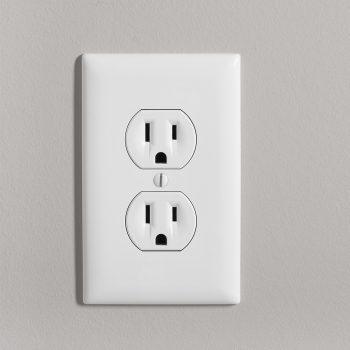cries in ground fault circuit interruptor
/But hardware stores don’t want to sell it tooooo youuu…/
/…tooo ya…/
I worked at an electrical supply store foe a while. The amount of people trying to make these is really way too damn high. At least once a week.
Tell me you’ve never used a generator without saying you’ve never used a generator.
Tell me you’ve never heard of an Interconnect and put the lives of every power line worker in your area at risk every time there’s a blackout without telling me…
Tell me you’ve never heard of turning off the main breaker before switching to generator power without saying it.
Interconnects remove an element of human error and putting Lineman at risk
Are you actually insane? Never EVER backfeed a socket like that. Way more dangerous than the Christmas light loonies.
Even with a generator, suicide cord is the WRONG way to do it.
Not like that’ll stop anyone anyways.
I’m sure someone would sell you one.
I’m not American, Christmas lights aren’t a thing here like they’re in the US, can someone explain?
A strand of christmas lights resembles an extension cord, but they tend to be made of smaller gauge wire and obviously have little sockets for tiny light bulbs spaced along them. They typically have 2-prong male plug on one end, often with a 2-prong female pass through on the back so you could plug more than one strand into the same receptacle, and they usually end in a female plug so they can be daisy chained.
Sometimes, when installing them on a house or something, the person installing them may not pay attention to which direction is which, and end up installing them so that the female-only end is near where they intended to plug them in. So instead of pulling them down, or running a long extension cord, they go to the hardware store looking for a male-to-male plug adapter.
Power plugs and sockets are gendered for a very good reason; the female receptacle keeps the energized contacts protected inside, and the male plug’s contacts should only be energized when plugged in and their outer shells protect them. A male-to-male cable when one end is plugged in and the other is free now has exposed mains current just waving around in the open air ready to kill someone. And, on a smaller note with christmas lights, they usually have a fuse built into the plug, and plugging them in backwards bypasses this for at least the first strand, so it’s technically 102.7% unsafe to do this.
The other thing a male-to-male adapter or cable is sometimes used for is to attach a portable generator to your home’s electrical system by just plugging it into an outlet, especially during a power failure. They do make what are essentially special male receptacles I think mainly for the RV industry for attaching generators like that, most houses won’t have these. Plugging it into a normal wall socket will actually work, but 1. you have bypassed the breaker panel, so the breakers no longer provide over-current protection. You could overheat the wires in the walls and burn down the house. 2. there’s a possibility that you’re feeding electricity to the entire house through the breaker box and even out to the transformer, which means the lines could be energized for linemen working on them. Throwing the main breaker might prevent that? They make switching gear designed for buildings with their own backup generators that can either manually or automatically sever their connection to the grid when on internal power, but again a doofus trying to make one of these cables probably doesn’t have one of those.
Wow. I had no idea. Thank you for educating me.
Outstanding, thank you for this
Strand of exterior lights, one end male plug one female. Idiots start to mount the lights with the female end near their outlet. Get done, become confused, go to store for male to male cord to plug into female end.
The female end is for chaining multiple strands, not for supplying power (directly) from the power socket.
Aaah, gotcha! Thank you!
The power can go through the female end just fine, that’s not the problem. The problem is people plug this “suicide cable” into the wall first, thus creating a 120v taser of sorts. Like someone else in this thread said, the only problem from cables like that is people tend to try to backfeed energy into the system with a generator or solar panels. Boom.
Also, at the end of the chain there is a male terminal exposed with live current. Could cause a fire I guess.
So is the problem solved by not plugging it into a powered wall plug? Just like… flick the switch off, like you would a light switch before changing a bulb?
The solution is pulling down your Christmas lights and hanging them back up the right way.
Most American outlets aren’t switched. They can be but most aren’t. If you’re really paranoid you can throw the breaker at the panel.
Wait really? I don’t think I have a single unswitched plug in my house, and I’ve never seen another house with even a single unswitched plug. Do US people need to unplug cords to get rid of standby lights?

Behold the typical North American duplex power outlet. They typically do not have a built in switch. They might be controlled by a light switch, so you can throw a switch near the door and have the floor lamps turn on but most are always hot.

That’s Australia’s.
Because of the no switch, does US plugs spark a lot when getting plugged in?
Yes, but if someone trips over the cord there is a 50% chance the wrong side comes unplugged and potentially kills them, hence why they don’t make these cords
Isnt having an open end really dangerous?
Every Christmas light string I have seen has had a small fuse inside of the plug, so even if you managed to get a female plug full of water or something and somehow manage to get shocked before a breaker trips in the outlet, you’re probably just going to blow the fuse.
Every Christmas light I’ve ever seen were all low voltage. The last Christmas light that was directly into main power instead of having a power convertor plug was decades ago. I guess that’s EU regulations at work.
You cam cover them with electric tape or put a cover on them. It’s nobmore dangerous than your home’s exterior outlets though.
Homes exterior outlets??? It might be europe but we dont have neither of those seemingly pretty dangerous things.
I’m going to assume you are English, since they seem to have extreme fear of electric shocks. But there is never any issue with exterior outlets. 99% of them have covers like this and are no nore dangerous that light switches on a patio or in your bathroom.
The places where i lived for longer times are hungary, sweden and ireland. Ireland has the same plug as the uk, and in hungary and sweden its the general eu plug. While the plug you linked does seem mostly safe, i think its a good thing that the uk takes electrical safety seriously. My main problem with the female plug is its a christmas tree that can catch on fire and i dont think an exposed wire near it is a good idea. If the cover is required in some way to complete the circuit then i have no problem with it. Thats good design but the sad thing is most of times they skip the good design part.
Thr cover doesn’t complete the circuit, it just prevents debris getting into the socket. An extension cord doesn’t have a cover on the female end and it is completely safe, just like an outlet in a bathroom or a surge protector.
Gfci outlets are pretty cool technology. They make getting electrocuted impossible as long they are installed correctly.
…in europe. From what i heard america doesnt really have them.
Considering they are required by code to have them anywhere there is water. America does have them.
Their lights usually have a plug on one end and a socket on the other. Ppl put them around the exterior of their hoses, then realise they did it the wrong way, and the socket end is near the outlet they wanted to plug them in.
Or they mounted two strands of lights, and where they meet up it’s either 2 plugs or two sockets accidentally.
I made one of those once by accident. I was talking a long extension cord that had been cut in two and converting it into two smaller cords. I messed up and attached the male to the wrong cable.
You can also use them to test the voltage, similar to testing a 9v battery.
aaaaaahhhhhhhhhhh lic-
Spectaculair give me 14 of them right now
I don’t really get it. Sure, the exposed prongs would be energized once you plugged one side in, but if you plugged the other side into a second outlet (assuming you didn’t cross live/neutral), nothing would happen. (those two outlets were likely tied together anyway)
You don’t work around dangerous things assuming you’ll never make a mistake, you work around dangerous things assuming you’ll never make three mistakes at the same time.
You are not immune to making one (or more) mistakes, no matter how careful you think you are.
Correction: you don’t work around dangerous things assuming you’ll make a mistake long
Well, maybe it’s because you may die if you accidentally touched touched the prongs? The purpose of female plugs is among other reasons to prevent accidentally touching them.
I guess the fact that it can kill you easily is not enough to call it a suicide cable lmao
Yeah, let’s call it a self defence cable instead. Like a corded taser.
Two things: 1: there’s a high chance you do cross live and neutral, or even live and live on different phases. 2: using it to plug in a generator to power your house can kill electrical workers who are trying to restore a power outage. (If you fail to open your circuit breaker.)
50-50 chance whether those two outlets are on the same phase or opposite faces; if it’s the latter, congrats, that’s a 240V short.
Besides, if there’s an outlet at the far end of your strong of lights, you don’t need this, you just plug it in there
Double live is very bad and the cord becomes a literal short. If you’re lucky a breaker will flip or fuse burn out. If you’re not so lucky you have a cable thats either going to start a fire burning its insulation off and melting itself, or potentially exploding depending on quality and type of cable.
The problem really is the super exposed hot prong you now have once you plug one end in
In addition to the exposed prongs, it also means you are passing current into a circuit of unknown capacity without using a safety breaker. You may also be back feeding into your neighborhood power grid and can kill people in the street/other houses that were not expecting the lines to be energized.
I used it to connect a generator to the wall and give me some temporary power in my house when I was renovating. It’s only dangerous if you are stupid.
The backup-generator seems to be the one semi-legit use-case that keeps coming up where few people have been able to present a significantly better alternative.
There’s literally an approved solution to the problem designed explicitly to solve the problem.
Install a transfer switch so you can disconnect utility power, switch to your generator and people can see the situation at the breaker.
If you don’t have one, you use something called an “extension cord” to run power to your important devices for the duration of the outage.
If you don’t know how to power a few appliances with a generator and some extension cords, you definitely shouldn’t be thinking you can use a dangerous cable that people who do know you should never use in the first place.The safe method for a generator is a transfer switch. With that cable you make your circuit breaker useless and could also send power back out to the street and harm someone working on the problem.
Not smart. You could kill yourself or some poor electrician working the problem outside your house somewhere.
Just because you didn’t get hurt doesn’t mean it wasn’t dangerous.
There’s a reason the people who write the fire and electrical codes say that if you need to do something like that, you need to have a properly installed transfer switch.
I mean, driving a car is dangerous, everything has a risk inherent to it but you can minimise it by being prudent.
Yes, you minimize risk by being prudent and using reasonable and cost effective safety measures.
In a car, that’s things like seatbelts, airbags, and other safety features.
The equivalent for powering your house with a generator is the aforementioned transfer switch.
What you’re doing is saying that driving a car without seatbelts or airbags is perfectly safe, you just need to not get in an accident.
Stop powering your house with a generator plugged in via the dumbest possible cable and just install a fucking transfer switch. They’re not expensive and it keeps you from needlessly endangering people, or even just having a preposterously dangerous cord laying around.
You turn off the breaker. You plug your generator abomination into a receptacle. Your partner checks the panel – the breakers are off, it’s safe to work with the electrical! They kill themselves.
You could just not be a threat to yourself and people around you.
If I ever buy one of these, I’d only ever use it to encase in resin and put on a shelf as a comedic ornament.
Oh I call the cables I use to wire up my controllers “suicide cords” because it’s just the hot, neutral, and ground hanging out one end, waiting to touch me…
I’ve used a suicide cord before in some rare instances. When I was finished I immediately took it apart.
You didn’t do it right…
I used to use one to get power into my popup camper…
Where was the power originally suppose to come in? They make power “Inlets” for that sort of thing. This one is designed with an Interconnect Switch for hooking into a system with Mains, but a camper with outlets should just have a inlet somewhere.
Fuck if I know… I bought the thing used from a buddy like 12 years ago and that was the cord he’d always used … Plugs into a regular outlet on the outside of the camper and then the outlets inside have power.
/me shrugs
https://www.youtube.com/watch?v=H-4mvK2FW78
Plugging the cord in the same outlet isn’t dangerous itself, but the prongs will be live on the end that’s not plugged in, I’d suggest not touching them. Where it IS dangerous is when people try to use them with a generator to back feed their panel. Don’t do that.









